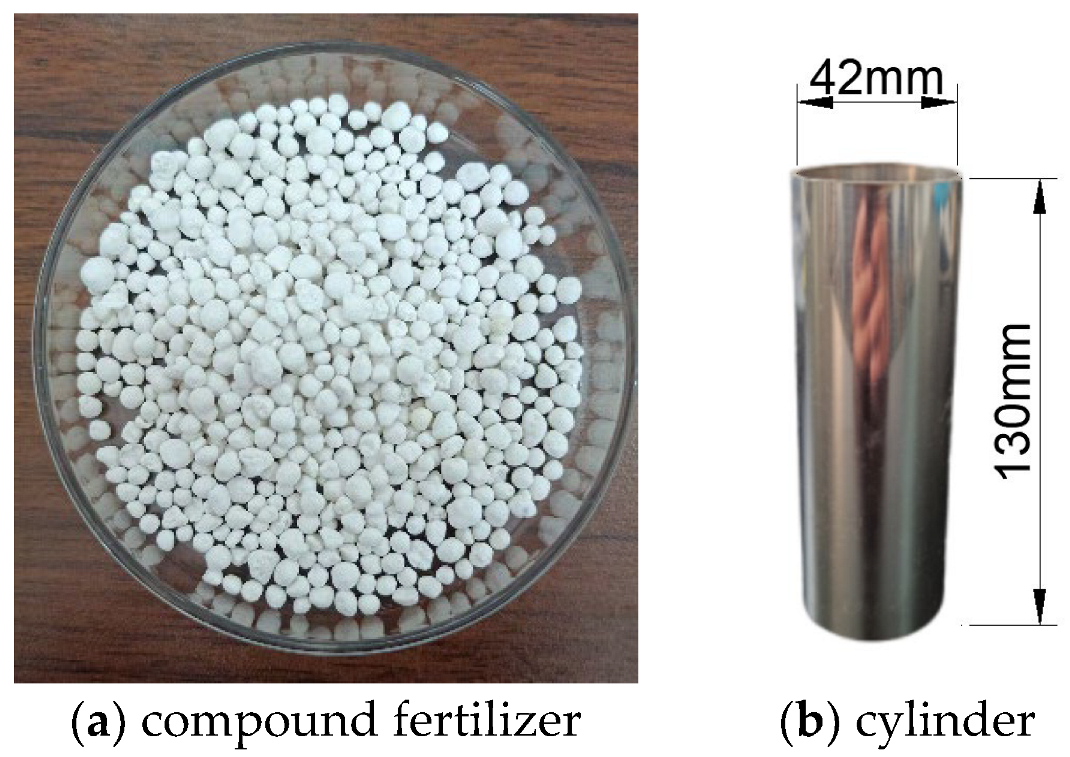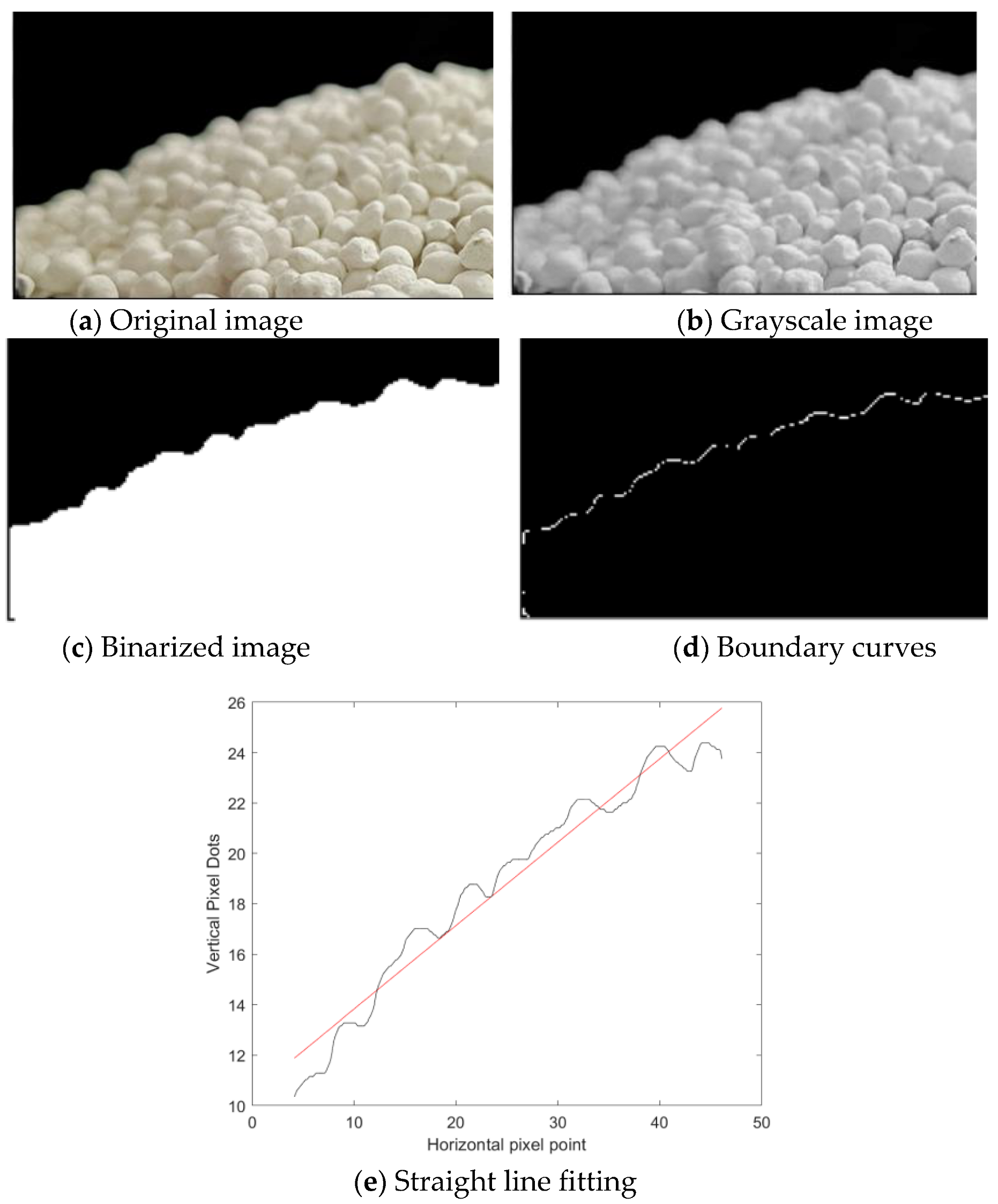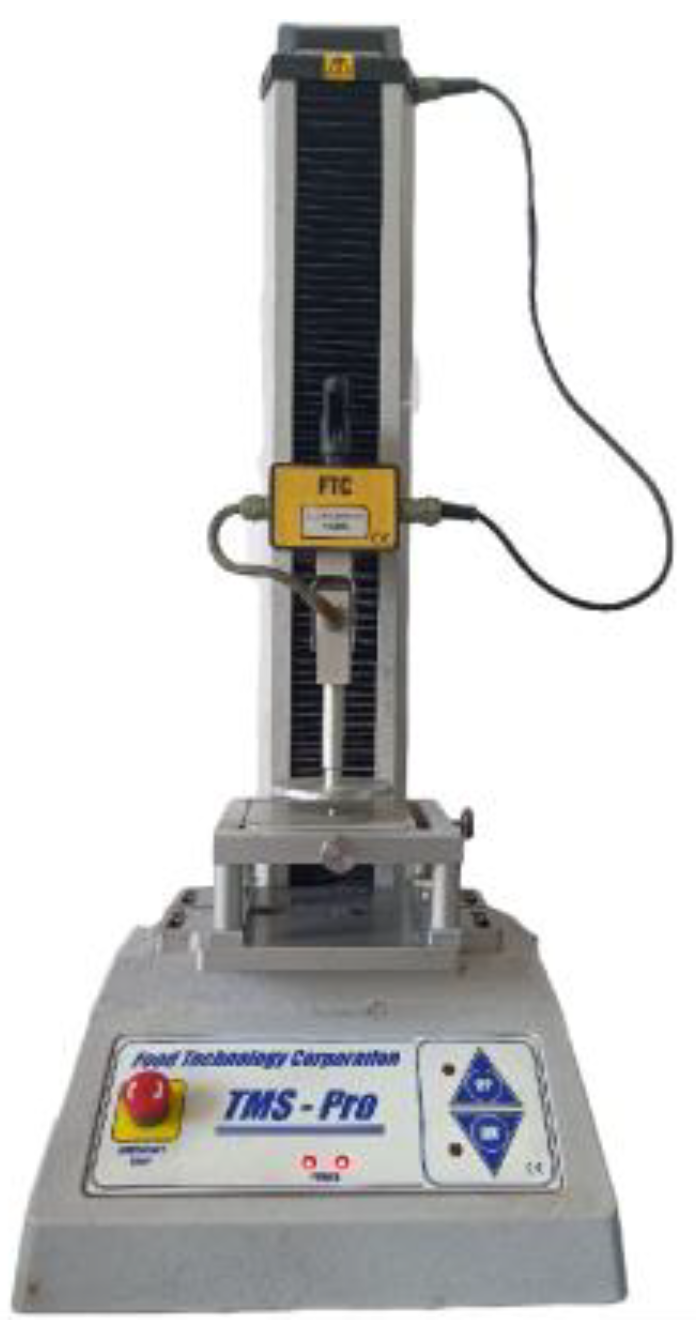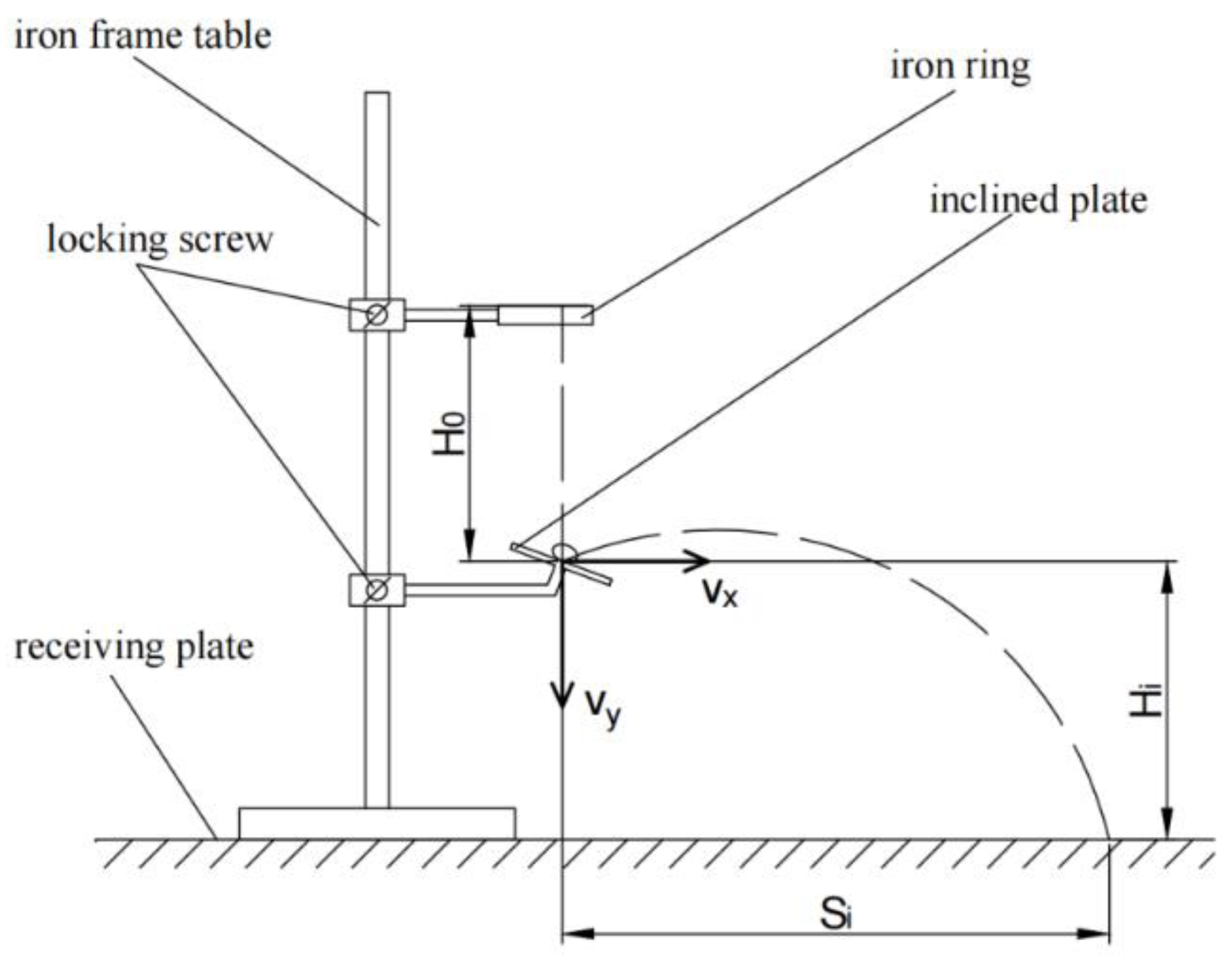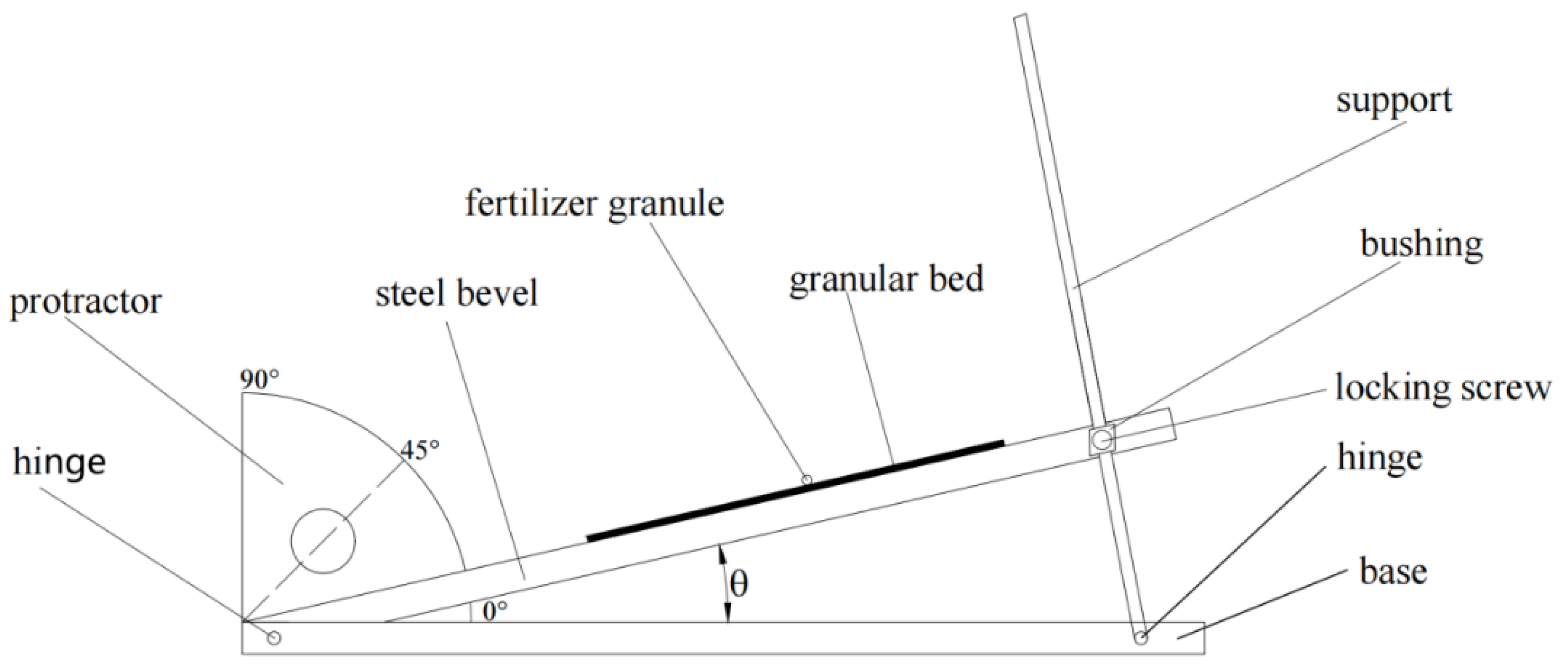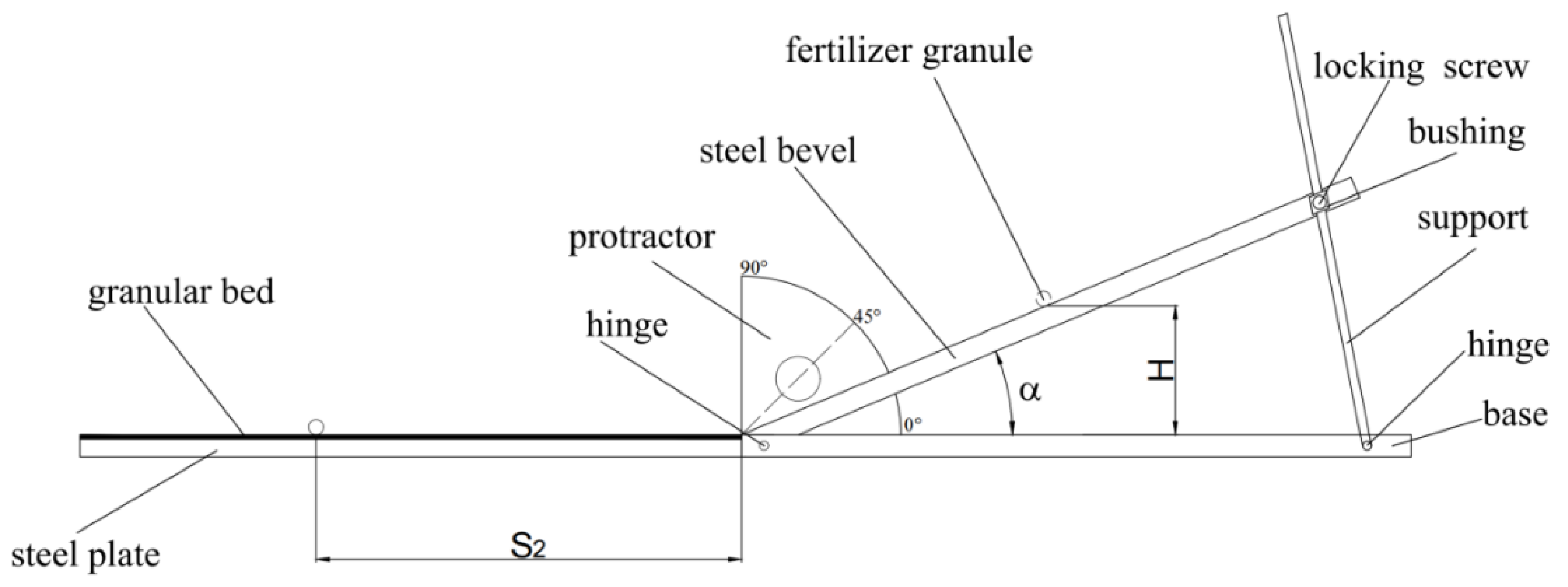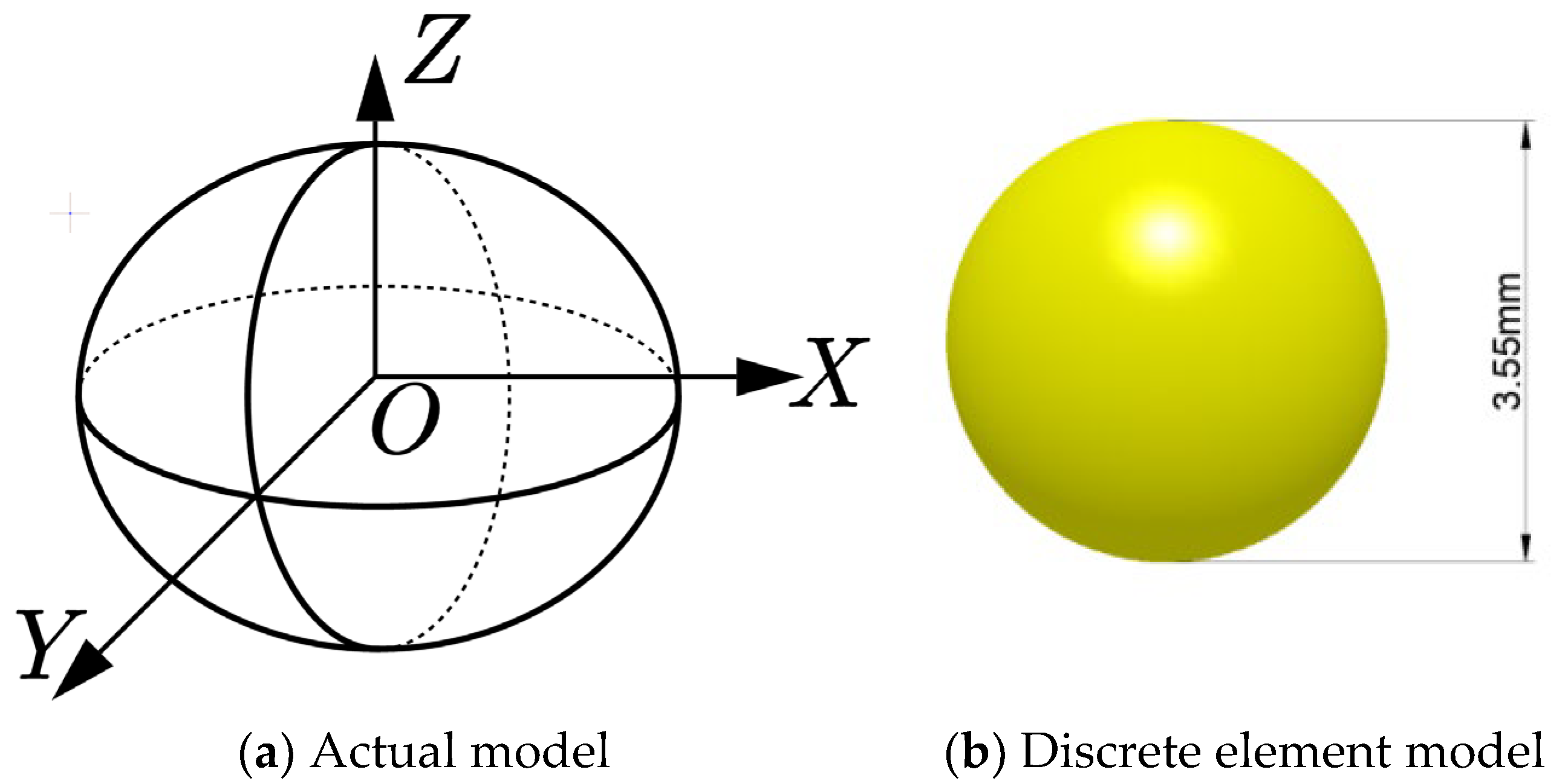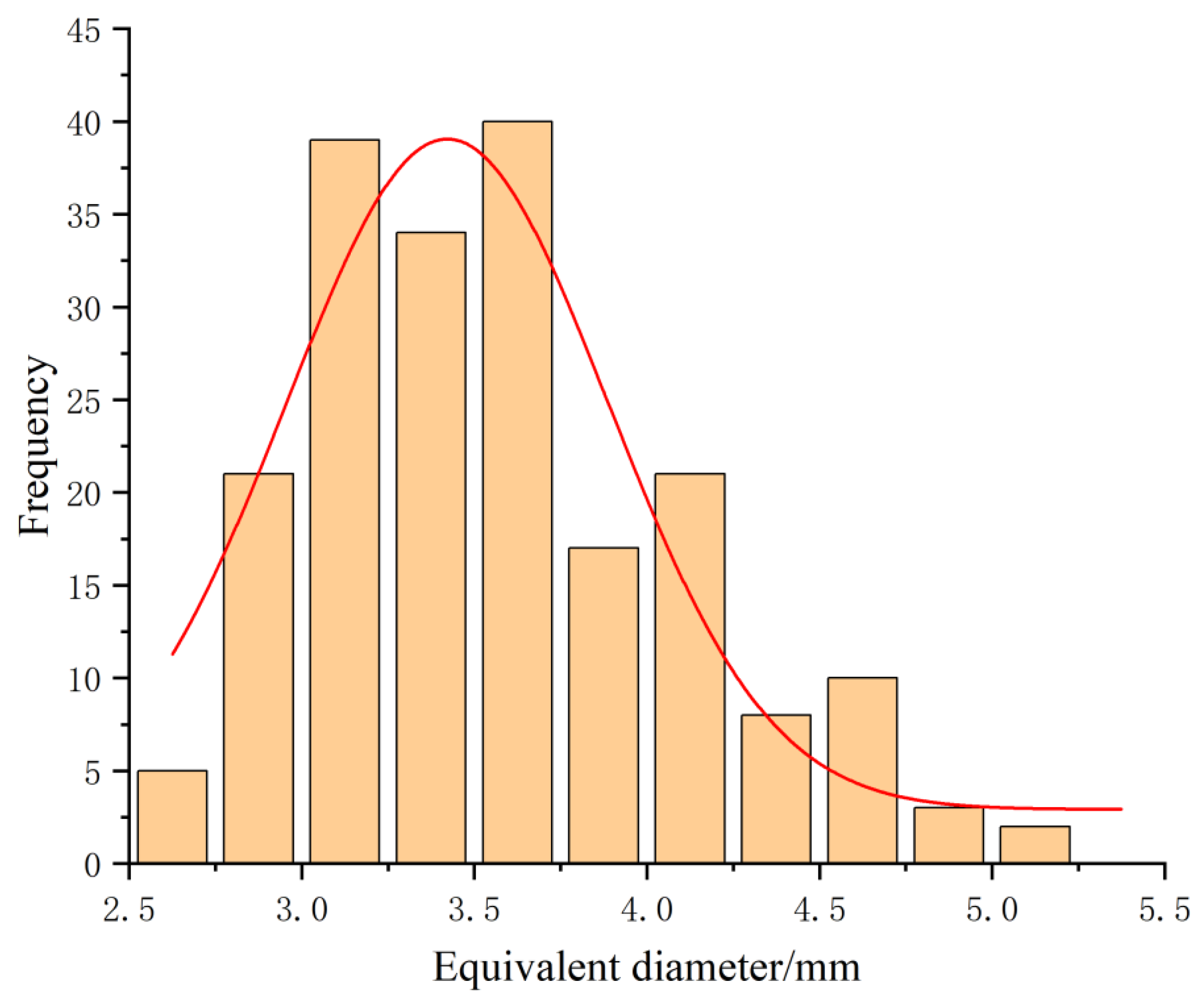1. Introduction
The excessive use of chemical fertilizers and low utilization rates in China not only squander resources and pollute the environment, but also frequently result in overabundances of dangerous compounds in crops and compromise food safety [
1,
2]. Mechanized variable fertilizer spreading technology has drawn a lot of interest from related academics to carry out effective and rational fertilizer application and nutrient management, increase fertilizer utilization rate, guarantee the safety of food production, and promote sustainable agricultural development [
3,
4,
5,
6]. The trajectory of fertilizer particles is significantly influenced by intrinsic parameters (density, moisture content, diameter, Poisson’s ratio, and elasticity modulus), as well as contact parameters (collision recovery coefficient, static friction coefficient, and rolling friction coefficient) [
7,
8]. The static and rolling friction coefficients primarily control the movement of the particles, while the collision recovery coefficient describes the stability of the particulates [
9]. In this study, the intrinsic parameters of compound fertilizer particles were directly measured by physical tests, and the contact parameters difficult to be accurately measured by physical tests were calibrated through discrete element simulation tests to obtain accurate contact parameters.
The discrete element technique has undergone continual study and improvement since it was first put forth by Gundall et al. [
10], and has been extensively employed in the study of agricultural products. Hao et al. [
11] established a discrete element simulation model of yam and sandy loam, and calibrated the mechanical properties of yam and the contact parameters between sandy loam substrates. Zhang et al. [
12] employed ball particles of various radii to fill the rice seed contour and were able to determine the filling particle radius that provided the best simulation accuracy and speed. Wang et al. [
13] modeled the sunflower seed model with different numbers of spherical particles and obtained the simulated angle of repost and packing density closest to the physical test results. Lu et al. [
14] conducted simulation comparison tests between the ellipsoidal modeling method and multi-sphere modeling, which showed that ellipsoidal modeling could accurately simulate the motion process of wheat seeds, providing a new discrete element method for wheat seed simulation. In order to reduce the computing time of the computer, the particle size of the discrete element model can be properly enlarged, so that the problem of the original model can be solved in a reasonable time. Ren et al. [
15] used the similarity theory and dimensional analysis to scale up the pulverized iron coal particles, calibrate the contact parameters of the enlarged particles, and verify the accuracy of the particle scaling method. Zou et al. [
16] calibrated the contact parameters of discrete element simulation of quicklime powder based on particle scaling theory, and the simulation experimental results obtained were highly consistent with the physical experimental results.
In order to obtain accurate contact parameters of fertilizer particles, parameter calibration of discrete element model of fertilizer particles is needed. Based on the Hertz-Mindlin with Johnson-Kendall-Roberts (JKR) model, and combined with physical tests, Yuan et al. [
17] calibrated parameters of the discrete element model of organic fertilizer bulk particles, and the error between the actual rest angle and the simulated rest angle obtained under the calibrated parameters was only 0.42%. To calibrate the discrete element parameters of large granular urea, Wen et al. [
18] proposed a calibration method of friction factors based on the general characteristics of granular materials. Du et al. [
19] conducted a uniaxial compression test to determine the ultimate crushing displacement and ultimate crushing displacement of wrapped fertilizer and found the best combination of simulation parameters for the Bonding model of wrapped fertilizer.
In this study, (1) physical tests were run to assess the intrinsic and contact parameters of the compound fertilizer particles; (2) Blackett-Burman tests were carried out with the actual measured contact parameter ranges at low and high levels; (3) the steepest ascent test and Box-Behnken test were combined with the actual rest angle to calibrate the parameters of the discrete element simulation of compound fertilizer and obtain accurate parameters. This will provide a reference basis for the research of accurate and uniform fertilizer spreading performance of the variable fertilizer spreader.
3. Determination of Actual Angle of Repose
The study used the cylinder lifting method to assess the resting angle of compound fertilizer particles. According to reference [
23], the diameter of the cylinder is 4–5 times larger than the maximum diameter of the fertilizer particle, and the ratio of the diameter to the height is 1:3. Therefore, the inner diameter of the cylinder used in this study was 42 mm and the height is 130 mm. During the test, the steel cylinder was lifted upright at a speed of 0.02 m/s, and the fertilizer particles naturally fell to form a pile of particles. Images of the pile of fertilizer particles were taken along the four mutually perpendicular directions. As shown in
Figure 2, using grayscale, binarization, and other image processing algorithms, the unilateral boundary curve of the pile of fertilizer particles was extracted for linear fitting, and the average value was taken as the actual resting angle of the pile of compound fertilizer particles. The test was carried out three times, with an average of 19.95° as the actual angle of repose of compound fertilizer particles.
6. Conclusions
In this study, Huachang 15-15-15 compound fertilizer was taken as the research object, the angle of repose was taken as the response value, and the contact parameters of compound fertilizer particles were calibrated by a combination of physical tests and simulation tests. Plackett-Burman, steepest ascent, and Box-Behnken tests were carried out successively to determine the simulation angle of repose that is most similar to the results of the physical tests. The specific findings are as follows.
- (1)
The Huachang 15-15-15 compound fertilizer has a Poisson’s ratio of 0.24, an elastic modulus of 2.85 × 107 Pa, a shear modulus of 1.15 × 107 Pa, and a moisture content of 5.6%, which serve as the foundational information for the simulation calibration.
- (2)
The Plackett-Burman test indicates that the fertilizer-fertilizer collision recovery coefficient, the fertilizer-fertilizer rolling friction coefficient, and the fertilizer-steel static friction coefficient are the variables that significantly affect the compound fertilizer’s resting angle. The steepest climb test revealed that the ideal value intervals for the three significant parameters were 0.25–0.45, 0.55–0.75, and 0.35–0.45. A regression model was created and optimized by Box-Behnken ANOVA, which revealed that in addition to the three significant parameters, the quadratic and interaction terms of the fertilizer-fertilizer collision recovery coefficient and fertilizer-fertilizer rolling friction coefficient also have significant effects on the rest angle.
- (3)
A fertilizer-fertilizer collision recovery coefficient of 0.42, fertilizer-fertilizer rolling friction coefficient of 0.66, and fertilizer-steel static friction coefficient of 0.41 are the three optimal values obtained after solving the optimal equation with actual rest angle as the target value. The simulation test was conducted with the ideal parameter combination, and the simulated rest angle was measured to be 20.61°. The relative error to the actual rest angle of 19.95° was 3.31%, with no significant error, indicating that the discrete unit model of compound fertilizer’s parameters obtained from the calibration of the study were accurate.
The process of integrating physical experiments with simulation experiments can increase the precision of discrete element model parameter calibration and produce precise contact parameters. The simulation test results in this study are very consistent with the actual test results, demonstrating the accuracy and dependability of the calibrated parameters. These calibrated parameters can provide the necessary fundamental data for subsequent discrete system modeling and particle kinematics and dynamic characteristics of the variable fertilizer speller, thereby enhancing its accuracy and uniformity.
